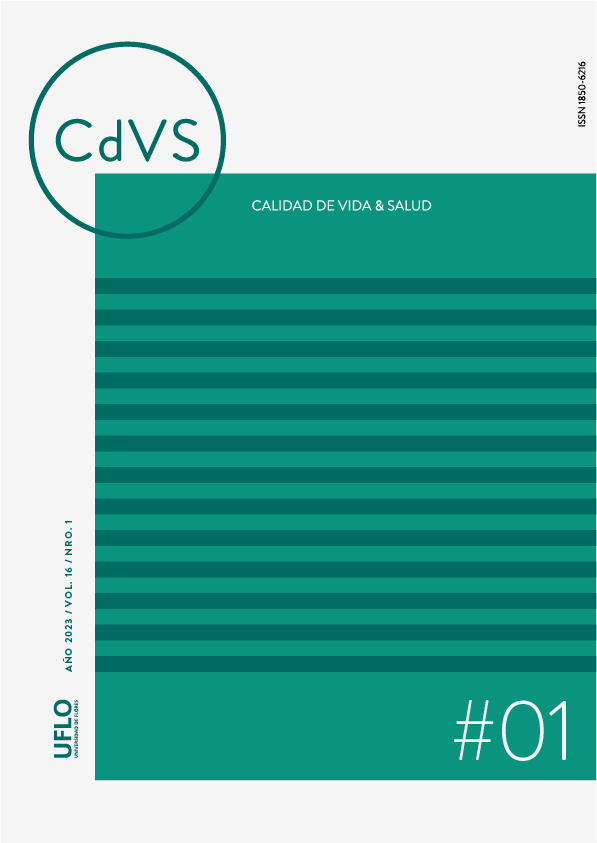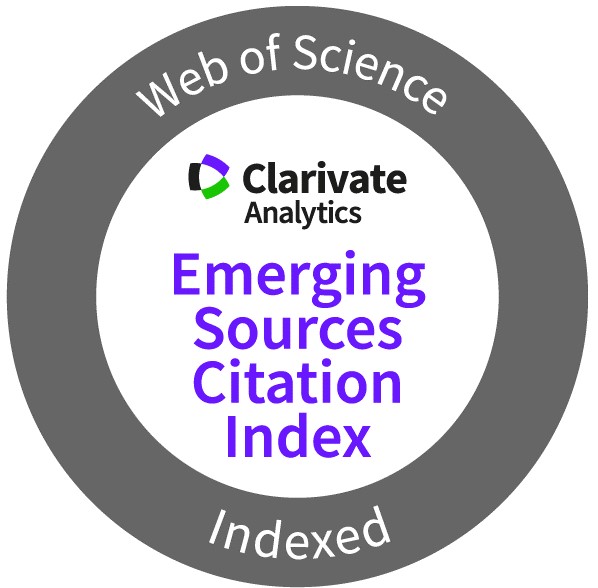Relación humano-perro/gato, estrés y errores cotidianos en la memoria
Palabras clave:
Relación humano-animal, Estrés, Memoria, Baby Boomers, Generación X, MillenialsResumen
El propósito del estudio fue evaluar la relación entre estrés y errores cotidianos en la memoria; comparar puntajes entre grupos generacionales e identificar si existe un efecto benéfico de las relaciones humano-perro o humano-gato sobre los errores en la memoria. Participaron 640 personas de México; 368 tenían perro, 188 gato, y 84 perro y gato; 205 de la generación X, 237 Millenials y 198 Baby Boomers. Se encontró correlación significativa entre estrés y memoria; diferencias significativas entre las generaciones para estrés, errores en la memoria y relación humano-gato. La generación Millenials tuvo mayor puntaje en estrés y más bajo en errores en la memoria. La generación X presentó mejor relación con el gato y con el perro. La relación humano-gato mostró correlación negativa y significativa con errores en la memoria, identificando que la correlación es exclusivamente en los Baby Boomers; el modelo estructural refleja que cercanía emocional con el gato y costo percibido explican el 31.7% de la varianza de errores cotidianos en la memoria en esta generación. Los pesos de regresión y el ajuste del modelo, apoyan la idea de que la relación con el gato podría tener un efecto protector en la memoria para la generación Baby Boomers.
Citas
Albright, A. E., Cui, R., & Allen, R. S. (2022). Pet ownership and mental and physical health in older White and Black males and females. International journal of environmental research and public health, 19(9), 5655. https://doi.org/10.3390/ijerph19095655
Allen, K. (2003). Are pets a healthy pleasure? The influence of pets on blood pressure. Current directions in psychological science, 12(6), 236-239. https://doi.org/10.1046/j.0963-7214.2003.01269.x
Amaya, G. J., & Prado, M. (2008). Los hijos tiranos llegan a las empresas. Trillas
Bao, K.J., & Schreer, G. (2016). Pets and Happiness: Examining the Association between Pet Ownership and Wellbeing. Anthrozoös, 29(2), 283-296. https://doi.org/10.1080/08927936.2016.1152721
Barker, S., Knisely, J., McCain, N. & Best, A. (2005). Measuring stress and immune response in health-care professionals following interaction with a therapy dog: a pilot study. Psychological Reports, 96, 713-729. https://doi.org/10.2466/pr0.96.3.713-729
Bentler, P. M. (1990). Comparative fit indexes in structural models. Psychological Bulletin, 107, 238–246. https://doi.org/10.1037/0033-2909.107.2.238
Browne, M. W., & Cudeck, R. (1993). Alternative ways of assessing model fit. En K.A. Bollen, K., & J. S. Long (Eds.). Testing structural equation models (pp. 136–162). Newbury Park, CA: Sage.
Cifuentes, A. (2010). Lo que los líderes colombianos deben saber sobre las nuevas generaciones. Universidad Externado de Colombia. https://www.uexternado.edu.co/wp-content/uploads/2017/07/Millennials-y-Centennials-resultados.pdf
Cohen, S., Kamarck, T., & Mermelstein, R. (1983). A global measure of perceived stress. Journal of Health and Social Behaviour, 24, 385–396. https://doi.org/10.2307/2136404
Comité de Ética en Investigación UDP (2020). Orientaciones éticas para el trabajo de terreno online. https://psicologia.udp.cl/cms/wp-content/uploads/2020/06/ORIENTACIONES-ETICAS-PARA-TRABAJO-ONLINE.pdf
Crawford, J. R., Smith, G. S., Maylor, E. A., Della Sala, S., & Logie, R. H. (2003). The prospective and retrospective questionnaire (PRMQ): Normative data and latent structure in a large non clinical sample. Memory, 11, 261–275. https://doi.org/10.1080/09658210244000027
Crawford, J.R., Henry, J.D. Ward, A. L., & Blake, J. (2006). The Prospective and Retrospective Memory Questionnaire (PRMQ): Latent structure, normative data and discrepancy analysis for proxy-ratings. British Journal of Clinical Psychology, 45, 83-104. https://doi.org/10.1348/014466505X28748
Díaz Videla, M., y Olarte, M. A. (2016). Animales de compañía, personalidad humana y los beneficios percibidos por los custodios. PSIENCIA. Revista Latinoamericana de Ciencia Psicológica, 8(2), 1-19. https://doi.org/10.5872/psiencia/8.2.21
Díaz, S. C., López, L. M., y Roncallo, L. L. (2017). Entendiendo las generaciones: una revisión del concepto, clasificación y características distintivas de los Baby Boomers, X y Millennials. Clío América, 11(22), 188-204. https://doi.org/10.21676/23897848.2440
Dwyer, F., Bennett, P. C., & Coleman, G. J. (2006). Development of the Monash dog owner relationship scale (MDORS). Anthrozoös, 19(3), 243-256. https://doi.org/10.2752/089279306785415592
Gee, N. R., & Mueller, M. K. (2019). A systematic review of research on pet ownership and animal interactions among older adults. Anthrozoös, 32(2), 183-207. https://doi.org/10.1080/08927936.2019.1569903
González-Ramírez, M.T., & Landero-Hernández, R. (2007). Factor Structure of the Perceived Stress Scale (PSS) in a Sample from Mexico. The Spanish Journal of Psychology, 10(1), 199-206. http://www.ucm.es/info/Psi/docs/journal/v10_n1_2007/art199.pdf
González-Ramírez, M.T., y Landero-Hernández, R. (2011). Diferencias en Estrés Percibido, Salud Mental y Física de acuerdo al Tipo de Relación Humano-Perro. Revista Colombiana de Psicología, 20(1), 75-86. http://www.revistas.unal.edu.co/index.php/psicologia/article/viewFile/16336/23398
González-Ramírez, M.T., & Landero-Hernández, R. (2014). Benefits of Dog Ownership: Comparative Study of Equivalent Samples. Journal of Veterinary Behavior: Clinical Applications and Research, 9(6), 311–315. http://dx.doi.org/10.1016/j.jveb.2014.08.002
González-Ramírez, M. T., & Landero-Hernández, R. (2021a). Pet–human relationships: Dogs versus cats. Animals, 11(9), 2745 https://doi.org/10.3390/ani11092745
González-Ramírez, M. T. y Landero-Hernández, R. (2021b). Diferencias en tolerancia a la frustración entre Baby Boomers, Generación X y Millennial. Ansiedad y Estrés, 27(2), 89-94. https://doi.org/10.5093/anyes2021a12
González-Ramírez, M. T., & Landero-Hernández, R. (2022). Cat Coat Color, Personality Traits and the Cat-Owner Relationship Scale: A Study with Cat Owners in Mexico. Animals, 12(8), 1030. http://dx.doi.org/10.3390/ani12081030
González-Ramírez, M. T., & Mendoza-González, M. E. (2011). Spanish version of the prospective and retrospective memory questionnaire (PRMQ-S). The Spanish journal of psychology, 14(1), 385-391. https://doi.org/10.5209/rev_SJOP.2011.v14.n1.35
González-Ramírez, M. T., Quezada-Berumen, L., Vanegas-Farfano, M., & Landero- Hernández, R. (2018). The effects of dog-owner relationship on perceived stress and happiness. Human-Animal Interaction Bulletin, 6(2), 44-57. https://www.apa-hai.org/human-animal-interaction/haib/effects-dog-owner-relationship-perceived-stress-happiness/
González-Ramírez, M.T., Vanegas-Farfano, M., y Landero-Hernández, R. (2017). Versión mexicana de la escala Monash de relación del dueño con su perro (MDORS-M). Alternativas en psicología, 37, 107-123. http://www.alternativas.me/attachments/article/149/08%20-%20Versión%20mexicana%20de%20la%20escala%20Monash.pdf
Guastello, A. D., Guastello, D. D., & Guastello, S. J. (2017). Personality differences between dog people and cat people. Human-Animal Interaction Bulletin, 5(1), 41-57. https://www.human-animal-interaction.org/haib/download-info/personality-differences-dog-people-cat-people/
Gutiérrez, G., Granados, D. R., y Piar, N. (2007). Interacciones humano-animal: características e implicaciones para el bienestar de los humanos. Revista colombiana de psicología, 16(1), 163-184. https://revistas.unal.edu.co/index.php/psicologia/article/view/1013
Howell, T. J., Bowen, J., Fatjó, J., Calvo, P., Holloway, A., & Bennett, P. C. (2017). Development of the cat-owner relationship scale (CORS). Behavioural processes, 141, 305-315. http://dx.doi.org/10.1016/j.beproc.2017.02.0240376-6357
Janssens, M., Eshuis, J., Peeters, S., Lataster, J., Reijnders, J., Enders-Slegers, M. J., & Jacobs, N. (2020). The Pet-Effect in Daily Life: An Experience Sampling Study on Emotional Wellbeing in Pet Owners. Anthrozoös, 33(4), 579-588. https://doi.org/10.1080/08927936.2020.1771061
Jöreskog, K. G., & Sörbom, D. (1984). LISREL-VI user’s guide (3rd ed.). Scientific Software.
Lazarus, R. S., & Folkman, S. (1984). Stress, appraisal, and coping. Springer.
Lima, M., Mateus, T. L., & Silva, K. (2022). With or Without You: Beneficial and Detrimental Associations Between Companion Dogs and Human Psychological Adjustment During a COVID-19 Lockdown Phase. Anthrozoös, 1-20. https://doi.org/10.1080/08927936.2022.2042081
Meléndez, L. (2014). El vínculo humano-animal y sus implicaciones para la psicología en Puerto Rico. Revista Puertorriqueña de Psicología, 25(2), 160-182. https://psycnet.apa.org/record/2016-04264-001
Odendaal, J. S. J., & Meintjes, R. A. (2003). Neuro-physiological correlates of affiliative behaviour between humans and dogs. The Veterinary Journal, 165, 296-301. https://doi.org/10.1016/S1090-0233(02)00237-X
Pellicer-Porcar, O., Mirete-Fructuoso, M., Molina-Rodríguez, S., y Soto-Amaya, J. (2014). Quejas subjetivas de memoria en adultos jóvenes: influencia del estado emocional. Revista de Neurología, 59(12), 543-550. https://www.neurologia.com/articulo/2014457
Penagos, M. P. (2018). Adaptación de gestión humana para recibir a la generación Z (Centennials) en las grandes empresas del Valle de Aburrá (Tesis de doctorado, Universidad EIA). https://repository.eia.edu.co/handle/11190/2219repository.eia.edu.co/handle/11190/2219
Pérez-Escoda, A., Castro-Zubizarreta, A., y Fandos-Igado, M. (2016). La competencia digital de la Generación Z: claves para su introducción curricular en la Educación Primaria. Comunicar, 24(49), 71-79. http://dx.doi.org/10.3916/C49-2016-07
Rijken, M., & van Beek, S. (2011). About cats and dogs. Reconsidering the relationship between pet ownership and health related outcomes in community-dwelling elderly. Social Indicators Research, 102(3), 373-388. https://link.springer.com/article/10.1007/s11205-010-9690-8
Roberts, L. D., & Sipes, J. B. A. (2018). Ethical issues in online research. En M. M. Leach & E. R. Welfel (eds.), The Cambridge handbook of applied psychological research (pp.474-492). Cambridge University Press. https://doi.org/10.1017/9781316417287.024
Rodríguez, K. E., Herzog, H., & Gee, N. R. (2021). Variability in human-animal interaction research. Frontiers in Veterinary Science, 1207. https://doi.org/10.3389/fvets.2020.619600
Rönnlund, M., Mäntylä, T. & Nilsson, L.-G. (2008). The Prospective and Retrospective Memory Questionnaire (PRMQ): Factorial structure, relations to global subjective memory ratings, and Swedish norms. Scandinavian Journal of Psychology, 49, 11–18. https://doi.org/10.1111/j.1467-9450.2007.00600.x
Ruiz, M. (2000). Introducción a los modelos de ecuaciones estructurales. Ediciones UNED.
Schwabe, L., Hermans, E. J., Joëls, M., & Roozendaal, B. (2022). Mechanisms of memory under stress. Neuron, 110(9), 1450-1467. https://doi.org/10.1016/j.neuron.2022.02.020
Smith, G., Della Sala, S., Logie, R.H., & Maylor, E.A. (2000). Prospective and Retrospective Memory in Normal Aging and Dementia: A Questionnaire Study. Memory, 8, 311-321. https://doi.org/10.1080/09658210050117735
Taniguchi, Y., Seino, S., Headey, B., Hata, T., Ikeuchi, T., Abe, T., Shinkai, S., & Kitamura, A. (2022). Evidence that dog ownership protects against the onset of disability in an older community-dwelling Japanese population. PLoS one, 17(2), e0263791. https://doi.org/10.1371/journal.pone.0263791
Utz, R. L. (2014). Walking the dog: The effect of pet ownership on human health and health behaviors. Social Indicators Research, 116(2), 327-339. https://doi.org/10.1007/s11205-013-0299-6
Wolf, O. T. (2009). Stress and memory in humans: Twelve years of progress? Brain Research, 1293, 142–154. https://doi.org/10.1016/j.brainres.2009.04.013
Publicado
Cómo citar
Número
Sección
Derechos de autor 2023 Mónica Teresa Gonzaáez-Ramírez, René Landero-Hernández

Esta obra está bajo una licencia internacional Creative Commons Atribución-NoComercial-CompartirIgual 4.0.
Los autores que publican en esta revista están de acuerdo con los siguientes términos:
- Los autores conservan los derechos de autor y garantizan a la revista el derecho de ser la primera publicación del trabajo al igual que licenciado bajo una Creative Commons Attribution License que permite a otros compartir el trabajo con un reconocimiento de la autoría del trabajo y la publicación inicial en esta revista.
- Los autores pueden establecer por separado acuerdos adicionales para la distribución no exclusiva de la versión de la obra publicada en la revista (por ejemplo, situarlo en un repositorio institucional o publicarlo en un libro), con un reconocimiento de su publicación inicial en esta revista.
- Se permite y se anima a los autores a difundir sus trabajos electrónicamente (por ejemplo, en repositorios institucionales o en su propio sitio web) antes y durante el proceso de envío, ya que puede dar lugar a intercambios productivos, así como a una citación más temprana y mayor de los trabajos publicados (Véase The Effect of Open Access) (en inglés).









